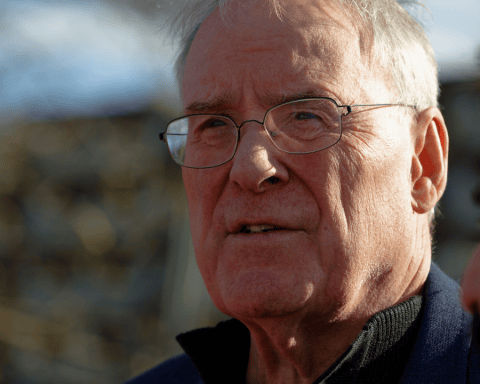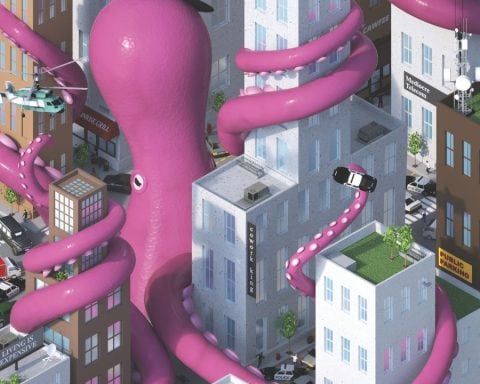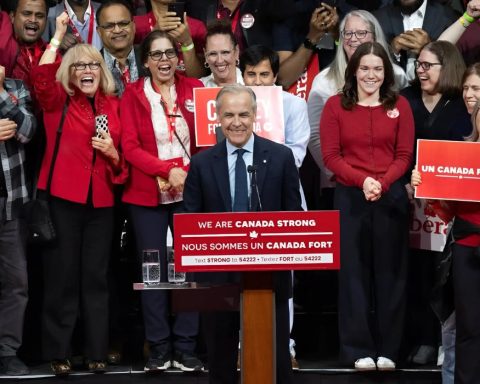Jim Fulton, Executive Director of the David Suzuki Foundation, who had a ring-side seat sitting as a member of parliament through five prime ministers, said he had to abstain because they were all delinquent. Desmond Morton, McGill Professor and Don of Canadian History toyed with us initially, suggesting that as a historian he was bound to stick to the old meaning of “green” (one who was inexperienced and therefore unreliable). His first vote was for the current Prime Minister, with honourable mentions for Tupper, Campbell, and Turner—“all who were not on the job long enough to do good or harm.”
But in the end, after all the ballots had been counted, there was an unlikely winner. It was not the buckskin-clad “I’m a canoeist, not a communist” Pierre Elliot Trudeau. Instead, the environmentalists expressed democratic preference for a man mostly reviled in left-of-centre circles: The Right Honourable Brian Mulroney.
It used to be that the Conservative Party was not an obstacle to environmental progress. Sir John A. Macdonald ushered in Banff as Canada’s first national park, way back in 1885. R.B. Bennett, the jowly Conservative Prime Minister from Alberta, enacted the Prairie Farm Rehabilitation Act, a seminal piece of environmental legislation that made prairie agriculture possible again after the Dirty Thirties. Mulroney, the jury’s choice, led the fight against acid rain.
Jim Bradley, the former Liberal Minister of Environment for Ontario, reflected, “When I think of [Mulroney], I always think of him and Reagan singing When Irish Eyes Are Smiling. But he never really bought into Reagan’s destructive environmental policies. He was a schmoozer and he cajoled Reagan and the administration and the Congress into eventually passing the Clean Air Act. Mulroney knew how to schmooze and he used that to advance the environmental agenda.”
“I am not going to rain on his parade,” said Bradley. “I can see him being portrayed as Green Prime Minister and leader of the Progressive Conservative Party.”
The Conservative Party was different then. The times were different—not as partisan. There is a contrast between the old Progressive Conservatives with Brian Mulroney and today’s Conservatives under Stephen Harper, who seem to deny the existence of the critical environmental issue of the day: climate change.
Jacques Gerin, who was Deputy Environment Minister for part of Mulroney’s term, reacted in jest when he heard that Mulroney had been voted Greenest PM. “The Green Plan, the acid rain battle, South Moresby national park, Brian Mulroney was the best and the worst,” he said, before flying off to Africa to examine the Chad-Cameroon pipeline.
Charles Caccia, Trudeau-era Environment Minister, jabbed, “Mulroney just finished what Trudeau started with acid rain.” But Monte Hummel, President Emeritus of WWF Canada, countered, “Trudeau rarely, if ever, even uttered the words ‘acid rain’ publicly.”
For all he got done on the environmental file, Mulroney’s ultimate environmental legacy will be tempered by three things: His ambitious Green Plan for a Healthy Environment was never fully implemented, in part due to his Liberal successor who chose to focus on deficit reduction at the expense of many programs, including enforcement of environmental policies. Second, the Free Trade Agreement brought many unintended consequences for the environment. Some argue that because of our raw material-focused economy, increased trade has accelerated the depletion of Canada’s resources and many of the provisions in the FTA and NAFTA frustrate industrial policy tools that could be used to promote sustainability such as price and tax policies to internalize environmental costs, according to Bruce Campbell of the Canadian Centre for Policy Alternatives. Third, under Mulroney’s style of executive federalism, devolution of power to the provinces picked up steam, a hindrance when it comes to enforcing national environment standards. At the end of the day, however, Mulroney was a leader who had the courage to spend his political capital on more occasions than any other Prime Minister doing what was right for Canada’s environment—even though trees can’t vote.
Despite the fact that trees can’t vote.
Mulroney’s environmental accomplishments include:
- Acid Rain Accord with the United States
- ratification of the Montreal Protocol on Substances that deplete the ozone layer
- placing environment minister on top cabinet committee of planning and priorities
- appointing strong ministers to Environment portfolio and giving them authority (Bouchardand Charest)
- first industrialized country to ratify both the biodiversity convention and the climate changeconvention agreed to at the UN Conference on the Environment
- significant new national parks (Bruce, South Moresby and Grasslands)
- Canadian Environmental Assessment Act and Canadian Environmental Protection Act
- strengthening enforcement of environmental regulations
- Raise the River Action Plan—the clean-up of the St. Lawrence River
- Great Lakes Action Plan
- Atlantic Coast Action Plan
- Partners in Sustainable Development of Forests Programs
- Arctic Strategy
- signing and ratifying of the U.N. Framework Convention on Climate Change
- Convention on International Trade in Endangered Species (CITIES)
- Sustainable Agriculture Initiative
- funding to improve water and sewage services on all reserves
- Green Plan that committed the government to specific environmental targets
For the list of judges and how they voted, dive into the PDF of our Summer 2005 "Greenest PM" package, including a Q&A with Brian Mulroney.





